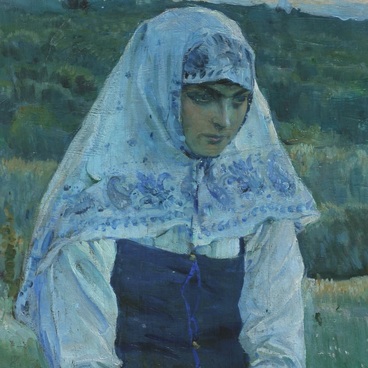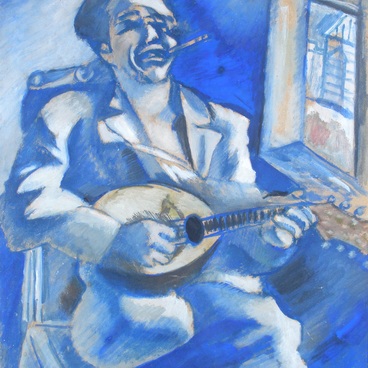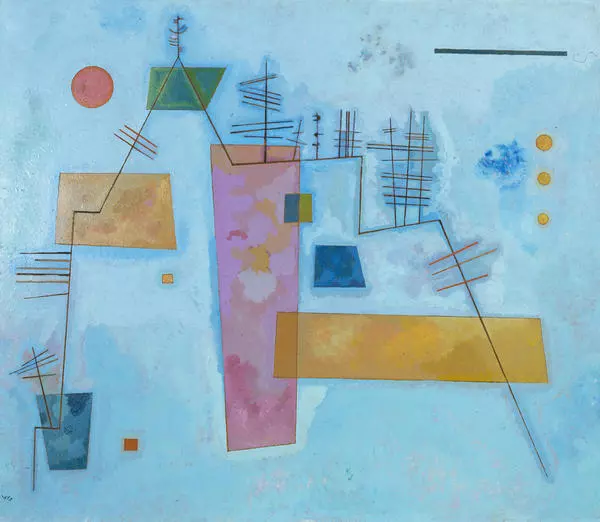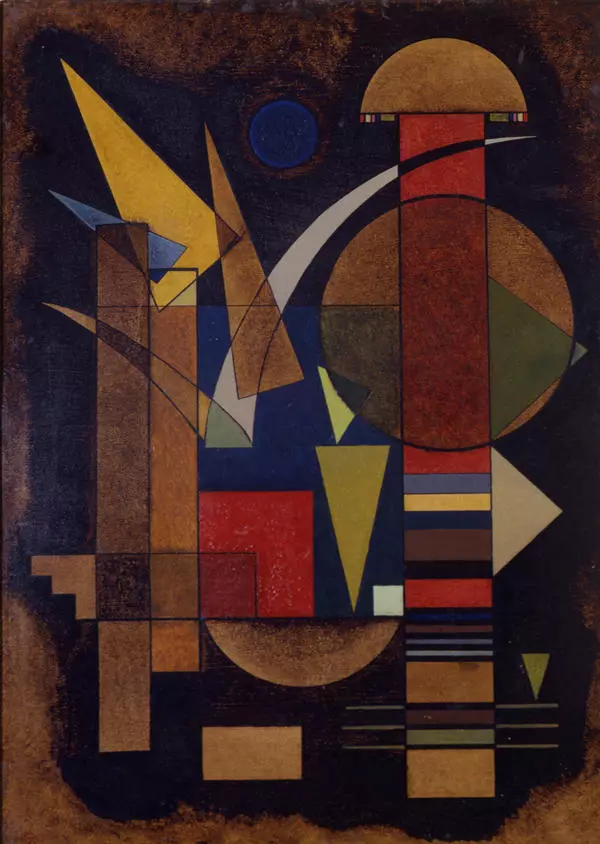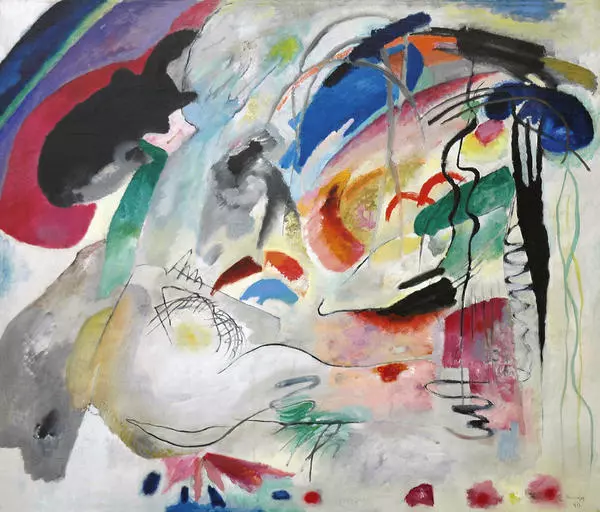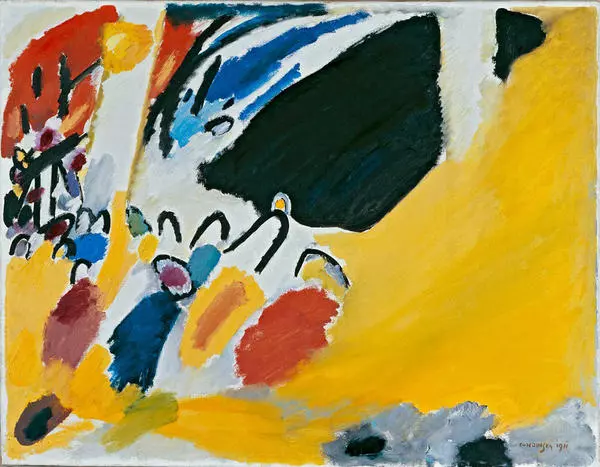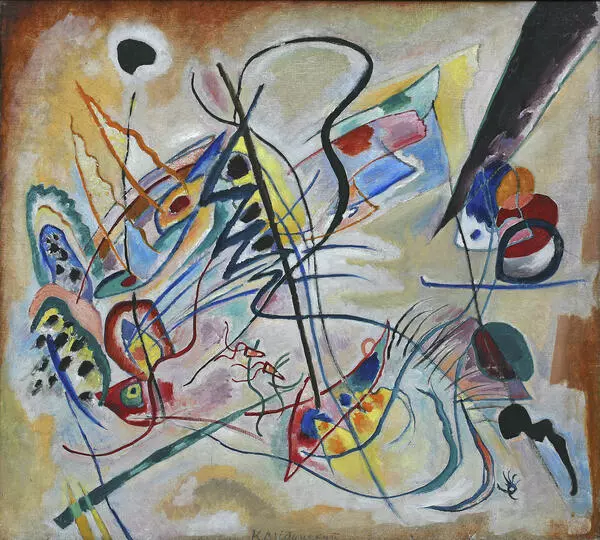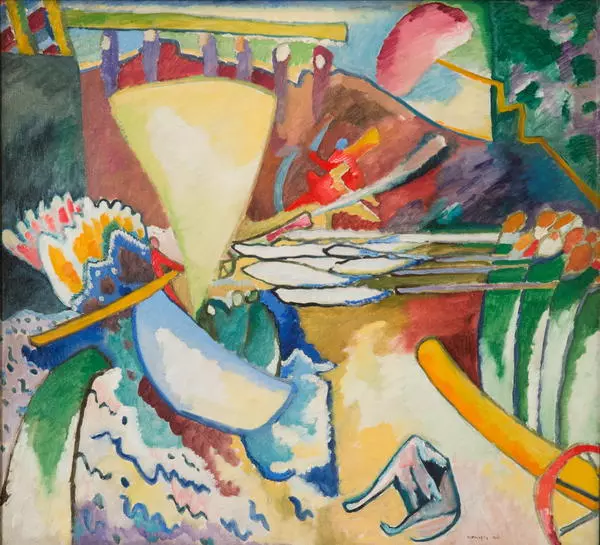Vasily Kandinsky was born in Moscow in 1866. He received a law degree and headed one of the Moscow printing houses. When Kandinsky was 30 years old, at one of the exhibitions he saw Claude Monet’s painting Haystack, which he later said about: ’… I felt that there was no object in this painting.’ Soon Vasily Kandinsky decided to quit his job and study painting. He became one of the founders of Russian abstract art.
Kandinsky sought present abstract art as a system. Therefore, theoretical works were no less important for him than paintings. In 1910, the artist published the book “On the spiritual in art”, and in 1926 — “Point and line on the plane.” In these two works, the artist outlined the basic tenets of his art and talked about associations that could cause the audience different colors, lines and spots on the paintings. Exciting combinations of shades and various figures in his paintings were designed to express vivid lyrical sensations. Similar to those that arise when a person listen to music, reads poetry or looks at the beautiful landscape.
Vasily Kandinsky identified three of his own genres. The artist called impressions to bу results of contemplation. Improvisations are an expression of the unconscious. When creating compositions, e. i. works of the highest level, the main role was given to the mind.
The artist created these canvases deliberately.
Improvisation from the collection of the Primorye State Picture Gallery was painted by Vasily Kandinsky on the eve of World War I in 1913. In it, you can see a galloping horse, a fortress, engulfed in fire, several soldiers, one of whom shoots a bow. Some scholars believe that Improvisation became an expression of the political and social instability that was felt in the society before the outbreak of war.
Vasily Kandinsky’s canvases are kept in major museums in Russia and Europe, as well as in private collections around the world. His paintings are included in the list of the most expensive works of Russian artists.
Kandinsky sought present abstract art as a system. Therefore, theoretical works were no less important for him than paintings. In 1910, the artist published the book “On the spiritual in art”, and in 1926 — “Point and line on the plane.” In these two works, the artist outlined the basic tenets of his art and talked about associations that could cause the audience different colors, lines and spots on the paintings. Exciting combinations of shades and various figures in his paintings were designed to express vivid lyrical sensations. Similar to those that arise when a person listen to music, reads poetry or looks at the beautiful landscape.
Vasily Kandinsky identified three of his own genres. The artist called impressions to bу results of contemplation. Improvisations are an expression of the unconscious. When creating compositions, e. i. works of the highest level, the main role was given to the mind.
The artist created these canvases deliberately.
Improvisation from the collection of the Primorye State Picture Gallery was painted by Vasily Kandinsky on the eve of World War I in 1913. In it, you can see a galloping horse, a fortress, engulfed in fire, several soldiers, one of whom shoots a bow. Some scholars believe that Improvisation became an expression of the political and social instability that was felt in the society before the outbreak of war.
Vasily Kandinsky’s canvases are kept in major museums in Russia and Europe, as well as in private collections around the world. His paintings are included in the list of the most expensive works of Russian artists.


